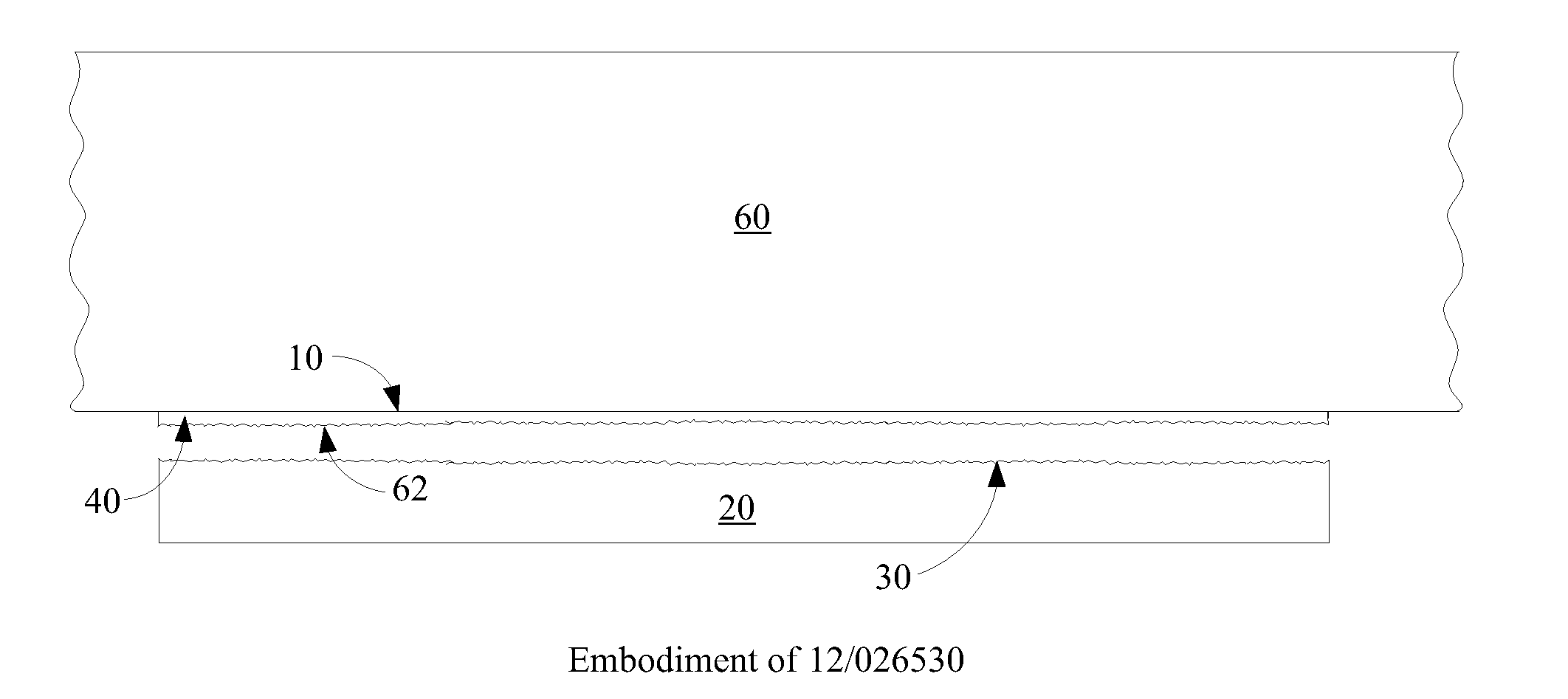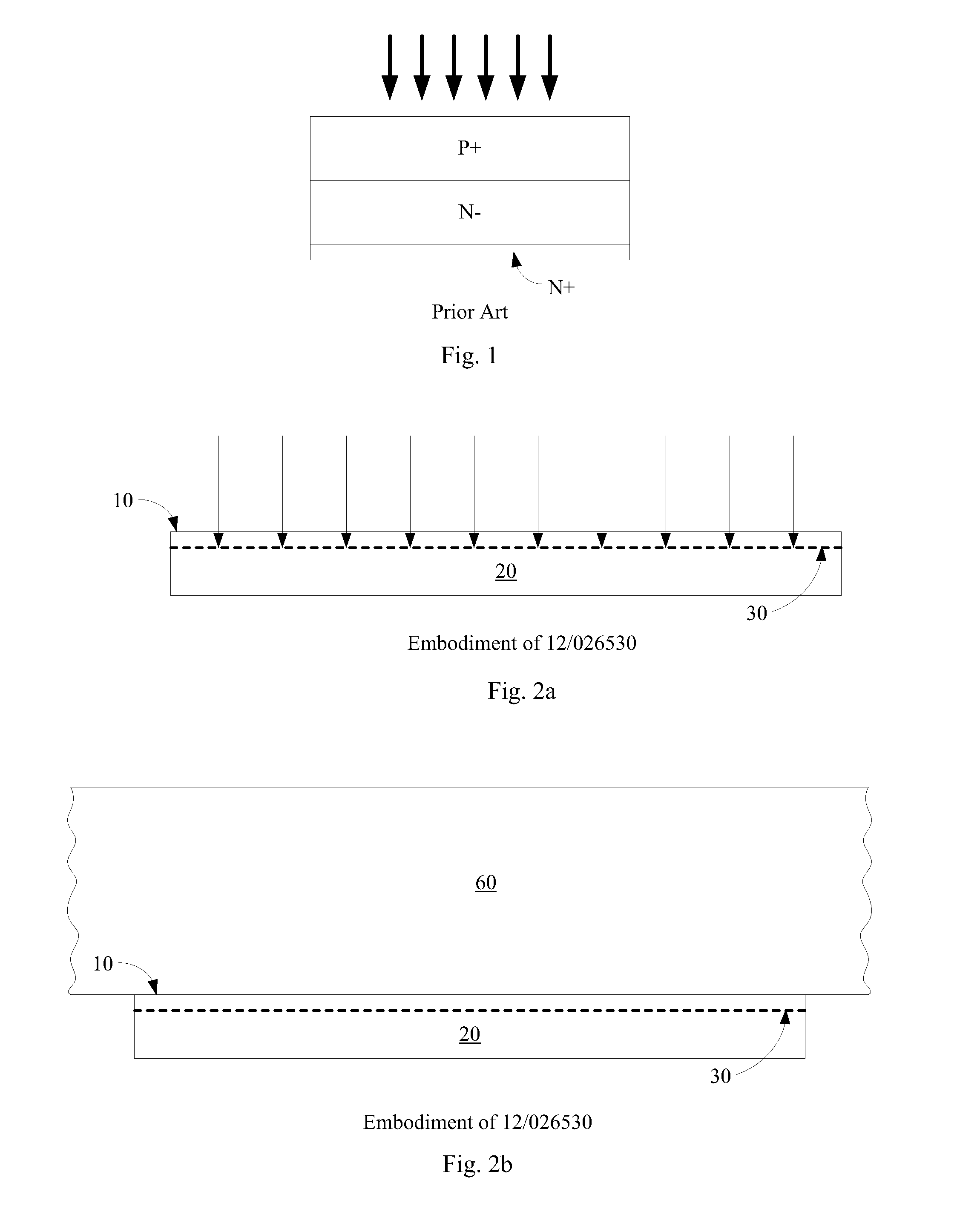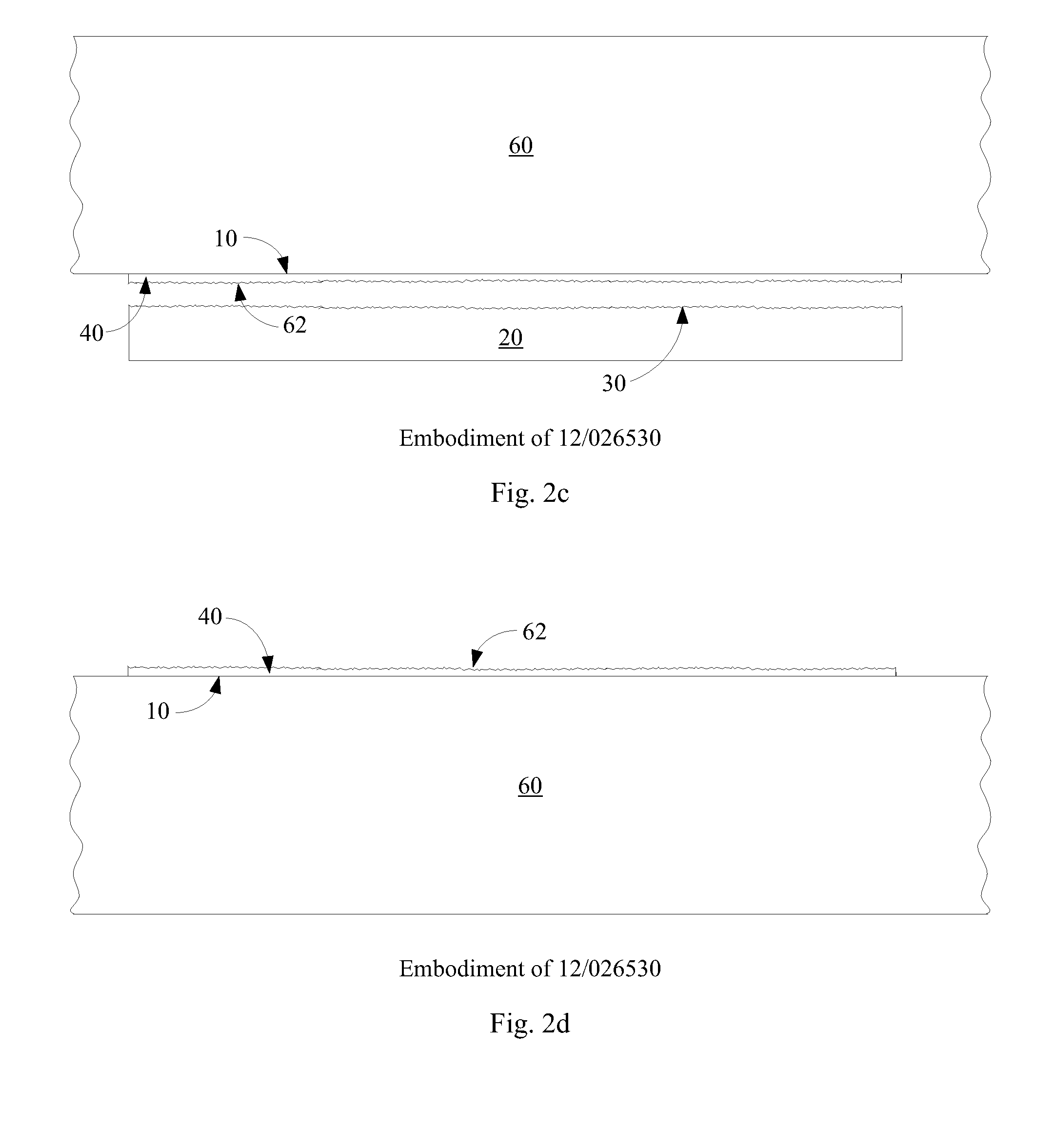Method for preparing a donor surface for reuse
a donor surface and surface technology, applied in the field of preparing a donor surface for reuse, can solve the problems of cmp being too expensive, and achieve the effect of removing or reducing asperities
- Summary
- Abstract
- Description
- Claims
- Application Information
AI Technical Summary
Benefits of technology
Problems solved by technology
Method used
Image
Examples
example
[0024]The process begins with a donor body of an appropriate semiconductor material. An appropriate donor body may be a monocrystalline silicon wafer of any practical thickness, for example from about 200 to about 1000 microns thick. In alternative embodiments, the donor wafer may be thicker; maximum thickness is limited only by practicalities of wafer handling. Alternatively, polycrystalline or multicrystalline silicon may be used, as may microcrystalline silicon, or wafers or ingots of other semiconductor materials. It will be appreciated by those skilled in the art that the term “monocrystalline silicon” as it is customarily used will not exclude silicon with occasional flaws or impurities such as conductivity-enhancing dopants.
[0025]The process of forming monocrystalline silicon generally results in circular wafers, but the donor body can have other shapes as well. For photovoltaic applications, cylindrical monocrystalline ingots are often machined to an octagonal cross section ...
PUM
 Login to View More
Login to View More Abstract
Description
Claims
Application Information
 Login to View More
Login to View More - R&D
- Intellectual Property
- Life Sciences
- Materials
- Tech Scout
- Unparalleled Data Quality
- Higher Quality Content
- 60% Fewer Hallucinations
Browse by: Latest US Patents, China's latest patents, Technical Efficacy Thesaurus, Application Domain, Technology Topic, Popular Technical Reports.
© 2025 PatSnap. All rights reserved.Legal|Privacy policy|Modern Slavery Act Transparency Statement|Sitemap|About US| Contact US: help@patsnap.com



